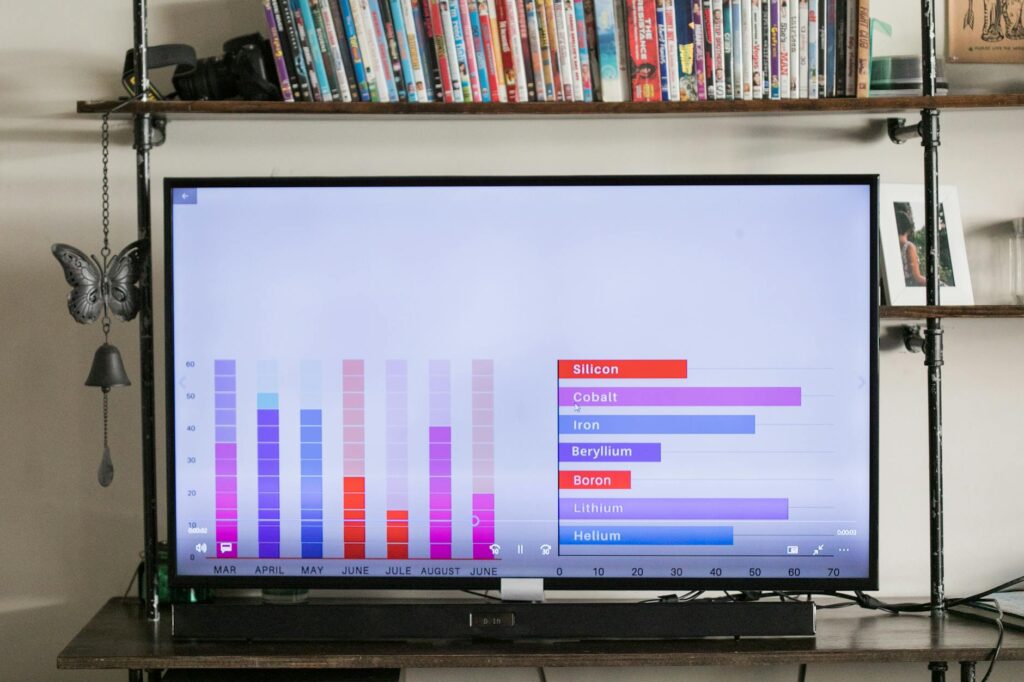We’ve all seen it. A project is flying high, the community is buzzing, and the chart looks like a rocket ship that’s forgotten about gravity. Then, a single headline drops. A three-letter agency—SEC, CFTC, DOJ—is mentioned. Suddenly, that rocket ship sputters, stalls, and begins a terrifying freefall back to Earth. For many, this is just market noise. But for those holding a bag, it’s a gut-wrenching lesson in a specific, brutal type of risk. The truth is, understanding the full spectrum of risks when investing in projects targeted by regulators isn’t just smart; it’s essential for survival in this wild west of digital assets.
This isn’t your typical market volatility. This isn’t a dip you just ‘buy.’ This is a fundamental, existential threat to a project’s very existence. When regulators set their sights on a cryptocurrency or blockchain company, they unleash a cascade of events that can wipe out investor value with surgical precision. It’s a domino effect, and if you don’t see the first one starting to wobble, you’re going to get crushed by the last one.
Key Takeaways
- Regulatory action is not just FUD: It’s a direct threat to a project’s operations, finances, and very survival.
- The risks are multifaceted: They include massive legal fees, fines, exchange delistings, loss of partnerships, and a complete collapse in investor confidence.
- Price drops are only the beginning: The immediate crash is often followed by a liquidity crisis, making it nearly impossible to sell your position, even at a loss.
- Real-world examples serve as stark warnings: Cases like Ripple (XRP) and LBRY Credits (LBC) show the devastating and long-lasting impact of regulatory battles.
- Due diligence is your only shield: Learning to spot the red flags that attract regulatory attention is a non-negotiable skill for any serious investor.
What Does “Regulatory Scrutiny” Actually Look Like?
First, let’s clear something up. A rumor on Twitter about an investigation is not the same as a formal regulatory action. The crypto space is rife with FUD (Fear, Uncertainty, and Doubt). But when the gears of government truly start to turn, it looks very different.
It often begins quietly. A company might receive a subpoena or a request for information. The real public-facing fireworks start with something called a Wells Notice. This is a formal letter from a regulator, like the U.S. Securities and Exchange Commission (SEC), informing a company that it intends to recommend enforcement action against them. It’s the final warning shot before the lawsuit is filed.
From there, things escalate to full-blown litigation. We’re talking about lawsuits that allege things like:
- Selling Unregistered Securities: This is the big one. The SEC has repeatedly argued that many initial coin offerings (ICOs) and token sales were, in fact, illegal sales of securities to the public.
- Fraud and Misrepresentation: Lying to investors about a project’s technology, partnerships, or team.
- Market Manipulation: Illegally orchestrating pump-and-dump schemes or other activities to distort a token’s price.
These actions aren’t just slaps on the wrist. They are methodical, well-funded campaigns designed to bring a project to heel, and they kickstart a chain reaction of devastating consequences.

The Domino Effect: Unpacking the Core Risks of Investing in Projects Targeted by Regulators
When you invest in a project that’s in the regulatory crosshairs, you’re not just betting on the tech anymore. You’re betting on lawyers, court outcomes, and the whims of bureaucracy. Here’s how the dominoes fall.
The Legal Gauntlet and Draining Financial Penalties
Fighting a federal agency is unbelievably expensive. We’re talking millions, sometimes tens or even hundreds of millions of dollars in legal fees. This money has to come from somewhere. Often, it’s drained directly from the project’s treasury—the very funds meant for development, marketing, and ecosystem growth. The project’s roadmap grinds to a halt because all resources are diverted to the legal battle.
And if they lose? The penalties are staggering. Fines, disgorgement (paying back all the money raised), and other sanctions can financially gut a project, leaving it a hollow shell with no path forward. That treasury you thought was backing the token’s value? It’s gone. Poof.
The Unraveling of Trust: Reputational Armageddon
Trust is the bedrock of any network or currency. Regulatory action shatters it. Suddenly, the project is radioactive. Potential partners back away. Talented developers quietly update their LinkedIn profiles and jump ship. The vibrant community that once propelled the project forward devolves into a toxic swamp of infighting, fear, and blame. No one wants to be associated with a potential law-breaker.
This reputational damage is often permanent. Even if the project eventually ‘wins’ in court years later, the stench of the accusation can linger, forever branding it as a risky and controversial asset.
Operational Gridlock: Exchange Delistings and Frozen Assets
This is where the pain becomes acute for investors. Major, reputable exchanges have compliance departments. They do not want the headache or legal risk of listing an asset that a powerful regulator has deemed an illegal security. The moment a lawsuit is filed, the delisting clock starts ticking.
A delisting is a death sentence for liquidity. When a major exchange like Coinbase, Binance, or Kraken removes a token, it instantly cuts off a massive portion of the buying and selling pressure, turning the asset into a digital ghost town.
Your ability to exit your position vanishes overnight. You might be forced to move your tokens to a less reputable offshore exchange, incurring more risk, or worse, be stuck holding a completely illiquid asset with no buyers in sight. Your investment is effectively frozen.

Extreme Price Whiplash and Vanishing Liquidity
It’s simple cause and effect. The news of regulatory action hits. Panic selling begins. The price nukes 50%, 70%, even 90% in a matter of hours or days. Then, the delisting announcements start, which triggers another wave of selling from those who can still access an exchange. The order books thin out. The bid-ask spread widens to a chasm. What little liquidity is left becomes concentrated in the hands of a few market makers who can now manipulate the price with ease. You’re left holding a bag that’s not only worth a fraction of what you paid but is also nearly impossible to sell. It’s the investor’s worst nightmare.
Cautionary Tales from the Crypto Crypt
This isn’t theoretical. We have clear, painful examples of how this plays out.
The Ripple (XRP) Saga: A Multi-Year Battle
In December 2020, the SEC sued Ripple Labs, alleging that XRP was an unregistered security. The impact was immediate and catastrophic. XRP’s price plummeted over 60%. Major US exchanges, including Coinbase, swiftly delisted or halted trading for XRP. For years, US-based investors were sidelined, watching a multi-billion dollar asset trade on offshore exchanges while their own holdings were locked up. While Ripple eventually scored a partial victory in court in 2023, the case cost them over $200 million in legal fees and years of lost progress and partnerships. The damage was immense, and the legal fight isn’t even fully over.
The LBRY Credits (LBC) Case: A Death Blow
If you think only the giants get targeted, think again. LBRY was a decentralized content-sharing platform with its own token, LBC. The SEC went after them, also claiming LBC was a security. Unlike the behemoth Ripple, LBRY didn’t have hundreds of millions to fight back. They lost the case. The court ruling effectively made it impossible for them to operate in the US and killed the project. The LBC token became virtually worthless, wiping out its investors. It’s a stark reminder that regulatory action can be an extinction-level event.
How to Be a Detective, Not a Victim: Spotting Regulatory Red Flags
You can’t predict every lawsuit, but you can certainly learn to spot the projects that are practically begging for regulatory attention. Before you invest, ask yourself these questions:
- How was the token sold? Was it a massive ICO sold to the general public with promises of huge returns? That’s a huge red flag for the SEC.
- How is it marketed? Does the marketing focus on price appreciation and ‘getting rich’ rather than the utility of the technology? Do they talk about it like it’s a stock in a company? That’s a bad sign.
- Is there a clear utility? Does the token have a real purpose within a functioning network right now, or is its only purpose to be held and speculated on? A lack of clear, present-day utility is a warning.
- Is the team centralized and US-based? A highly centralized company based in the United States that controls the token’s supply is a much easier target for US regulators than a truly decentralized, anonymous, or globally distributed project.
- What does the language say? Scour their website and whitepaper. Words like ‘profit,’ ‘dividends,’ ‘interest,’ and ‘ownership stake’ are catnip for securities lawyers. Legitimate projects tend to avoid this language carefully.
Is There Any Silver Lining? The Contrarian’s Gamble
Some traders see a major regulatory lawsuit as a buying opportunity. Their thesis is that the fear is overblown and that if the project survives, the price will rebound spectacularly. This is known as ‘buying the blood in the streets.’
Let’s be crystal clear: this is an expert-level, extremely high-risk gamble. You are betting against the United States government. You are betting that the project has the hundreds of millions of dollars and the legal team to survive a multi-year onslaught. You’re betting that exchanges will re-list the token. It can pay off—some who bought XRP after the crash and held on did very well. But for every one of those, there’s a LBRY where investors were completely wiped out. This is not a strategy for the faint of heart or the under-capitalized.

Conclusion
Investing in crypto is already playing with fire. Investing in projects targeted by regulators is like dousing that fire with gasoline and standing in the middle of it. The potential for catastrophic, unrecoverable loss is exponentially higher than standard market risk. The allure of a beaten-down asset can be tempting, but the underlying threats—legal, financial, operational, and reputational—are a vortex that can swallow your capital whole.
Your best defense is offense. Do your homework. Scrutinize the projects you invest in through a regulatory lens. Understand the red flags. And if you see the shadow of a regulator looming over one of your investments, you need to have a plan and be prepared for a level of volatility and risk that few are truly equipped to handle.
FAQ
What’s the difference between an SEC and a CFTC action?
The SEC (Securities and Exchange Commission) primarily deals with assets it classifies as securities (like stocks and bonds). Its main argument in the crypto space is that many tokens are unregistered securities. The CFTC (Commodity Futures Trading Commission) regulates commodity derivatives. It generally views cryptocurrencies like Bitcoin and Ethereum as commodities. The two agencies sometimes have overlapping jurisdiction, creating a complex regulatory landscape for crypto projects.
Can a project fully recover after being targeted by regulators?
It’s very difficult but not impossible. Ripple’s partial court victory led to the re-listing of XRP on US exchanges and a significant price recovery, showing that a project can survive and rebound. However, the ‘win’ came at an immense financial cost and after years of being hampered. Many other projects, especially smaller ones, do not have the resources to survive the fight and collapse completely, regardless of the legal merits of their case.


